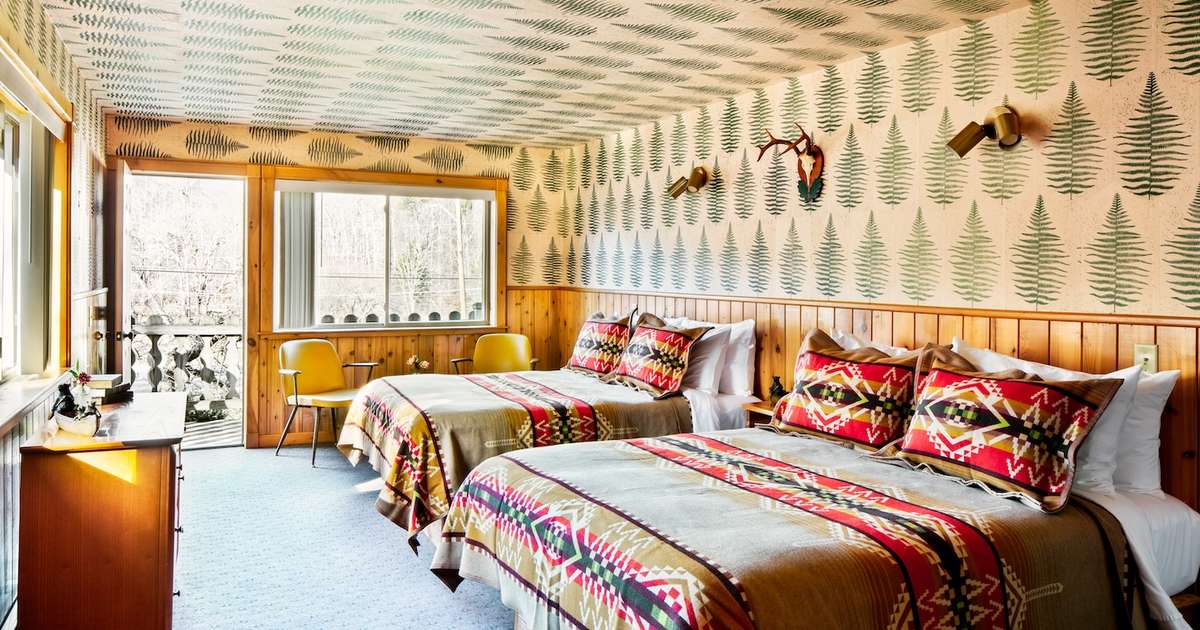
I’m writing this from a quiet table at Fowlscombe Farm in the English countryside – a place where hospitality is grounded in land and place. The historical buildings are restored with care. The food is grown on-site. Nothing is rushed or wasted. Everything feels considered.
The Farm here is a living system – one that ties together food, architecture, design, and wellbeing to restore ecosystems, support community, and build real connection. And it didn’t happen by accident. It took vision, structure, and collaboration across disciplines..
Models like Fowlscombe show us what’s possible when intention meets innovation. As we learn from them and others, we must share successes and setbacks openly – so that, as an industry, we can better adapt, refine, and scale what works. This kind of knowledge exchange is how we build resilience across the hospitality sector – and elevate it to meet the future with purpose and creativity.
The EHL Open Innovation Summit is one place where such connections for inspiration and innovation are being built. It’s a space to share ideas, test assumptions, and learn from each other.
The context we’re in
The hospitality industry is navigating big changes: rising costs, shifting consumer expectations, and new pressures from climate, health, and technology. But with these challenges come new possibilities – especially when it comes to food.
Guests today want more than amenities. They want experiences that make them feel better, choices that reflect their values, and stories they can trust. Food sits at the center of all of this.
In my work with startups, farmers, and leading agriculture and food companies around the world, I see clear signals of where things are heading. Here are five areas to watch:
Personalized food & wellbeing
Technology is making it possible to understand individual health needs and tailor food options and experiences accordingly. This opens the door for hotels and wellness retreats to offer meals that support recovery, focus, sleep, or stress.
- ZOE uses microbiome and glucose testing to help people understand how food affects their bodies—insights that could guide menu personalization.
- Superbrewed Food produces high-protein, fiber-rich ingredients using fermentation that support gut health and immune function.
- Nestlé Vital Pursuit is a new line of meals designed for people on GLP-1 medications – protein-forward, portion-controlled, and nutrient-dense.
These products reflect a broader shift: from generalized “healthy” options to food that meets people where they are and where they want to be. Hospitality can translate this into flexible menus and smart intake tools that support each guest’s body and unique goals.
Ingredient innovation
Future menus will feature ingredients that offer better nutrition, improved functionality, and a lighter environmental footprint – many of which are being developed through cutting-edge approaches.
- Aleph Farms creates cultivated meat from cells using 3D printing to replicate the structure and taste of traditional cuts.
- WhatIF Foods works with climate-resilient crops like Bambara groundnut to create noodles and beverages with strong nutrition profiles, while also empowering smallholder women farmers.
- MyForest Foods uses decentralized mycelium production to produce meat alternatives like bacon with low resource use and high flavor.
- Michroma develops natural food colorants from fungi, replacing synthetic dyes.
These ingredients offer new opportunities for chefs and culinary teams to rethink their menus – combining sustainability, flavor, function – and fun! .
Technified terroir
Consumers care about where their food comes from and what impact it has. Hospitality spaces can help make that visible, credible, and even beautiful.
- HowGood provides data on ingredient-level sustainability and sourcing, helping restaurants build traceable, values-driven menus.
- B’ZEOS produces seaweed-based compostable packaging, ideal to reduce plastic waste for takeout and in-room dining options.
- Dooda Solutions and Humica offer biochar and vermicompost systems that improve soil health and carbon retention – tools that can be implemented on-site to enhance food quality and sustainability storytelling.
These types of solutions create a deeper connection between the food guests eat and the systems that produce it, offering both transparency and trust.
Testing through pop-ups and pilots
In fashion, capsule collections test bold ideas quickly. Hospitality can learn from this and use the same logic – offering limited-time menus, pop-ups, and creative experience pilots to test out new ingredients, formats, and technologies.
Hospitality operators could take on small experiments with the ideas presented above to help their teams learn fast and stay relevant without long lead times or high risk.
Examples:
- A tasting menu co-created with fermentation startups, featuring lab-grown chocolate and precision-brewed coffee.
- A seasonal showcase of underutilized crops like fonio, breadfruit, or other locally-relevant crops.
- A guest-driven wellness pilot using real-time feedback to improve sleep-supporting menus or gut-friendly dishes.
Collaboration as a competitive strategy
In the EHL Food & Wellbeing Report, we recommend that hospitality properties act as living labs – e.g. places to test new ideas with real users. This requires partnership, but it doesn’t need to be complicated.
- GIGA connects hospitality brands with startups working on regenerative sourcing, agrifood tech, and wellbeing, and helps design scalable programs to test and deploy solutions.
- Agritecture designs and implements rooftop farms, greenhouses, and vertical gardens that reduce food miles and engage guests.
- The EHL Innovation Hub brings together students, technologists, chefs, and corporates to prototype hospitality solutions and test them in-market.
Working with partners like these helps operators stay ahead of what’s coming while creating new sources of value for guests, teams, and communities.
Final thought
The future of hospitality cannot be about business as usual – it’s must enable a better future for all. The sector can step up to play a central role in tackling challenges like climate change, chronic disease, and social disconnection. But only if we try things that haven’t been done before.
If you’re running a hotel, a food brand, or a wellness space, now’s the time to build this future. Start with a pilot. Measure what works. Involve your team. Work with startups.. And share what you learn – so the whole industry, and the world, can move forward, faster.
Join us on May 20–21 at the EHL Open Innovation Summit, where we ignite meaningful conversations through the Future of Food track. Together, we’ll explore bold ideas and work on collaborative solutions to rethink the future of hospitality and travel, one that gives more than it takes.


